Grand Lodge History (1960 – 1980)
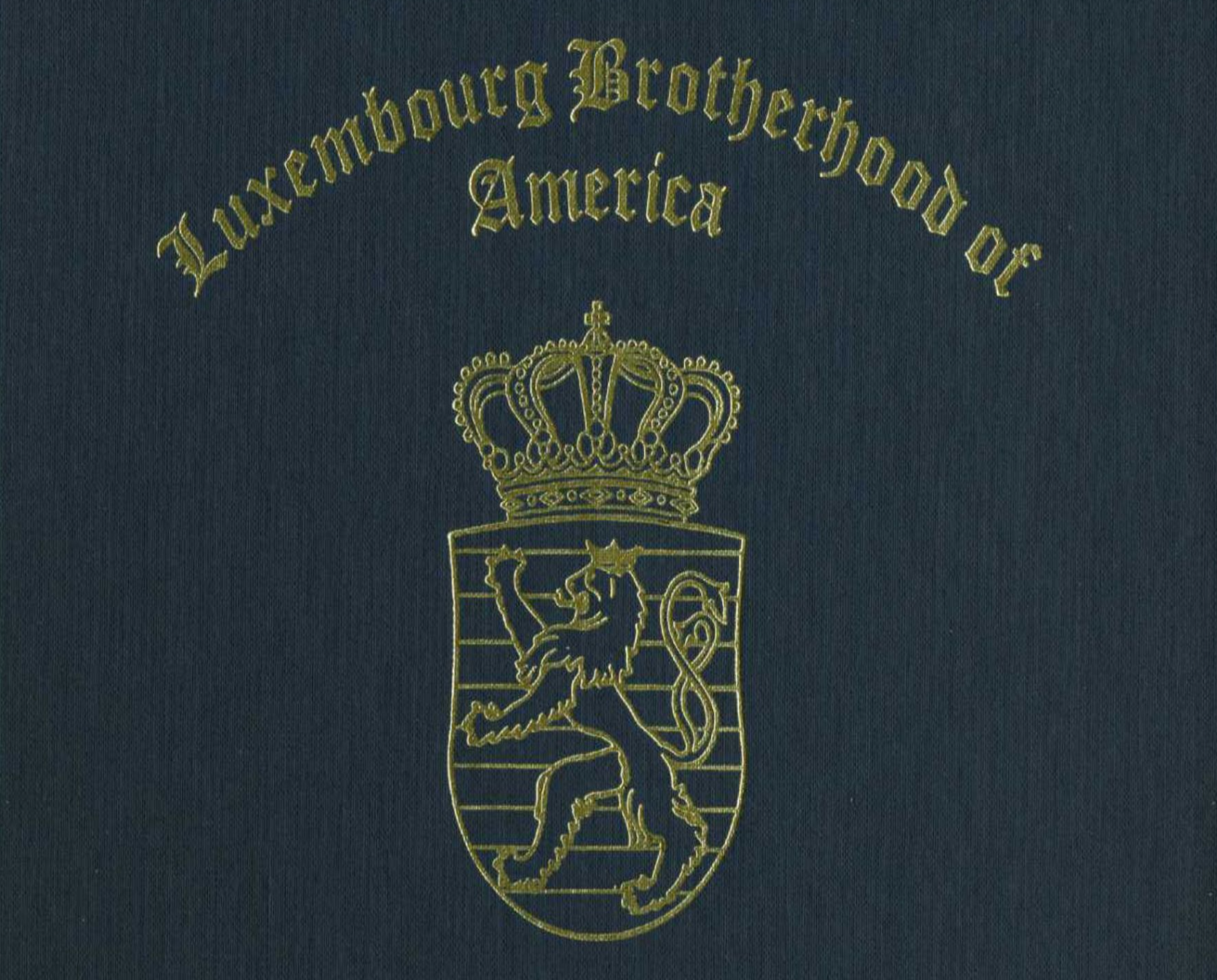
1960 – 1980
In 1963, two events of significance occurred. The first was the visit of H.R.H. Charlotte to Chicago, and the second was the first overseas trip to Luxembourg, organized by the L.B.A. In April, President John F. Kennedy extended an invitation to Grand Duchess Charlotte for a state visit to America. Chicago was to be included in her itinerary.
On May 3, 1963, the Luxembourg-American Social Club, in conjunction with the L.B.A., hosted a reception at the Luxembourg Gardens. Coming from downtown Chicago, the Grand Duchess and Prince Jean, accompanied by the Secret Service, Chicago, and Morton Grove Police, drove to the Gardens with lights flashing and sirens wailing.
Six hundred people awaited the Grand Duchess, in a richly decorated hall festooned with the most beautiful flowers that could be provided by the Pesche, Leider, Platz, and Kennicott families. Consul of Luxembourg and Section 15-member, Joseph J. Witry, Sr. escorted the royal party to the podium. Mel Weides, a member of Section 3, sang the national anthem of both America and Luxembourg, accompanied on the piano by Mathias Graten, also of Section 3. Fred Pesche’s granddaughter, Collette, daughter of Fred, Jr., presented the Grand Duchess with a bouquet of pink roses. After the remarks of several dignitaries, a reception line was formed, and the Grand Duchess greeted each guest.
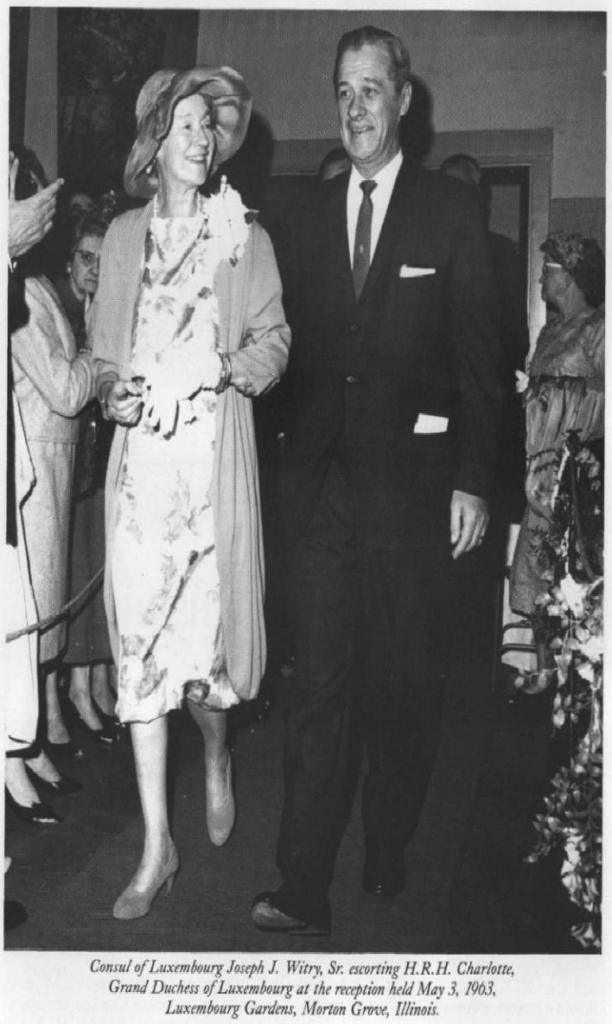
After the evening, the Grand Duchess was escorted to her automobile by Consul Witry. Near the limousine were two thirteen-year-olds, Consul Witry’s son Richard and his friend, Philip Leadroot. Dick Witry caught his father’s attention, and the two youngsters were introduced to the Grand Duchess and Prince Jean. Twenty-one years later, during Grand Duke Jean’s state visit to America, Dick Witry would be Vice-Consul of Luxembourg in Chicago, and Philip Leadroot, would be a member of the Secret Service, assigned to the Grand Duke’s protective detail.
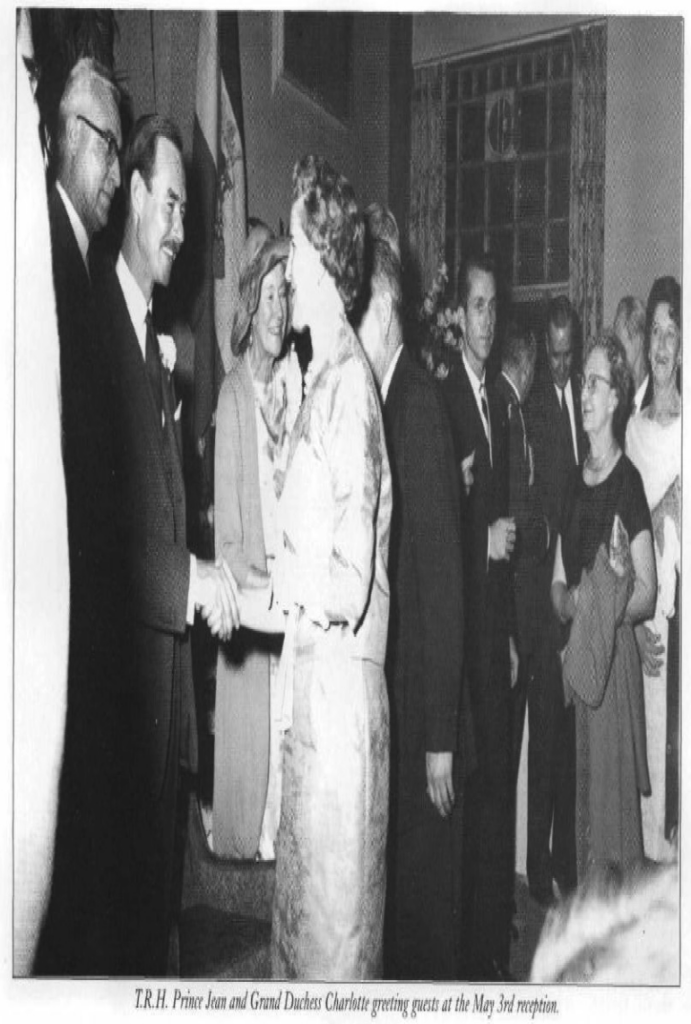
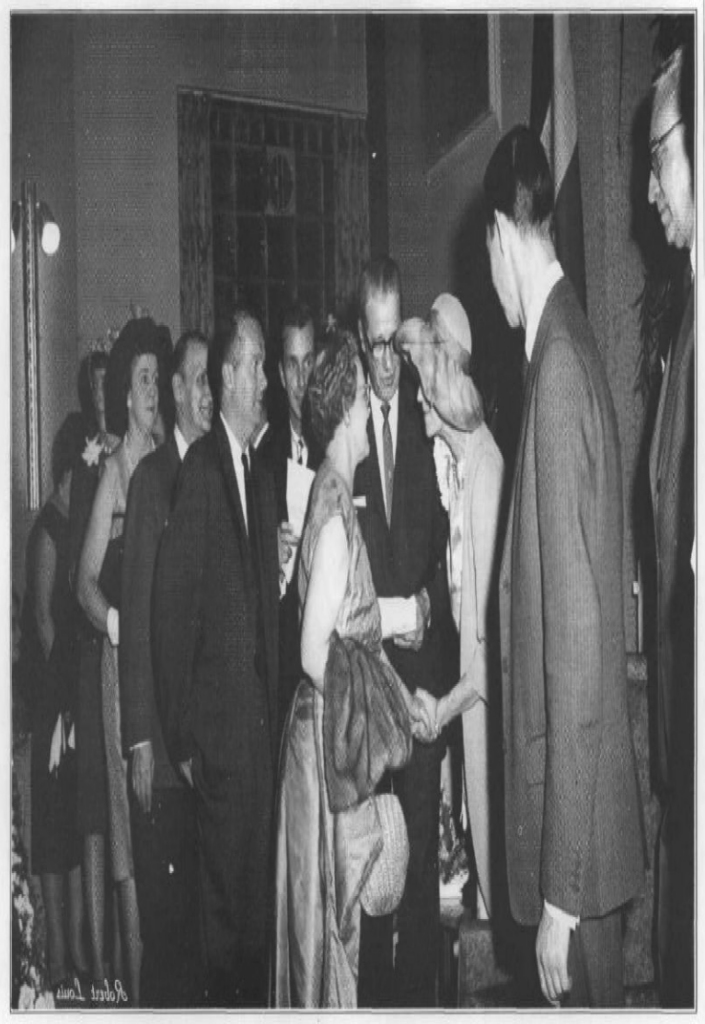
The second event of significance in 1963 was the Millennium Flight to Luxembourg. On May 10, 1963, two Air France jets departed O’Hare airport, in Chicago, to bring a contingent of 217 Luxembourg expatriates back to their home country as part of Luxembourg’s Millennium Celebration. Little did these pilgrims know or guess the magnificent reception that awaited them in Luxembourg.
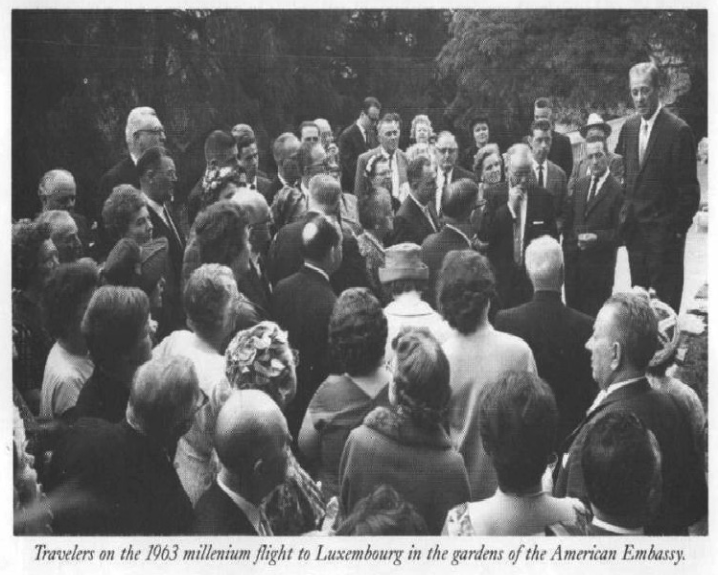
Exclamations of surprise echoed throughout the Boeing 707 as it glided to a landing at Findel Airport and its passengers first sighted the immense crowd at the landing field. The welcome was unexpected and spontaneous. Led by Bishop Leon Lommel, numerous Luxembourg officials greeted the newly arrived guests. Little girls dressed in native costumes presented bouquets of beautiful flowers. Dr. Carlos Puetz, President of the American Luxembourg Society, delivered the welcoming remarks.
Awaiting them on the first day of their arrival was an official reception hosted by H.R.H. Grand Duchess Charlotte and Prince Jean at the Royal Palace. It was a happy encore, for just a few days previous the Royal Family had been in Chicago as guests of the Luxembourg Community of Chicago.
On Tuesday, May 14th, a special High Mass was celebrated at the Luxembourg Cathedral, at which two American priests, Fathers Wilmes, and Brousius, officiated. The moving experience was highlighted by the touching words of Father Bodson, the hearty welcome of Bishop Lommel, and then the magnificent church choir of the Luxembourg Cathedral. The ceremony was closed with the Luxembourg and American National Anthems, at which point it was reported that there wasn’t a dry eye in the church.
Various side trips took the group to the Rhine, and the Ardennes, and a friendly reception by the cities of Wiltz and Ettelbruck. The Memorial Day observance at Hamm Military Cemetery was a “must” for every American in Luxembourg, for these marble crosses symbolize, even today, the close ties between the new and old world. When the sound of “Taps” echoed through the stillness of Hamm cemetery, it brought back memories of anxious moments in America during the “Battle of the Bulge”‘ when the fate of Luxembourg hung in the balance, and hearts were heavy at the somber news from the old homeland.
The Spring Procession in Echternach has always been a solemn occasion. Thanks to the generosity of Bishop Lommel, the group had an excellent vantage point from which to view the procession. Many of the Americans took part in the Octave procession and were proud to march side with their comrades from the American Luxembourg Society.
From arrival until departure, on June 10, 1963, the touring Americans were treated more like conquering heroes than ordinary folk returning home, some obtaining their first glimpse of the land of their forefathers.
At the Grand Lodge convention held May 5, 1963, Grand President Leo Eschette spoke of the glittering reception that had been held two days earlier for the Grand Duchess. He also spoke of the renewed challenges that lay before the L.B.A. in the future. In his speech, he decried the fact that fewer and fewer members were involving themselves in the affairs of their sections. The challenge lay in initiating new members.
The problems of the declining membership were evident in the dwindling number of sections. At its height, the L.B.A. was comprised of 25 sections. They were, and their year of formation:
| Section # | Location | Year | Section # | Location | Year |
| 1 | Chicago | 1887 | 14 | Remsen, IA | 1905 |
| 2 | Chicago | 1896 | 15 | Niles Center, IL | 1905 |
| 3 | Chicago | 1897 | 16 | Escanaba, MI | 1905 |
| 4 | Chicago | 1900 | 17 | Chicago | 1905 |
| 5 | Chicago | 1900 | 18 | Lemont, IL | 1905 |
| 6 | Hawthorne, IL | 1900 | 19 | Vandegrift, PA | 1905 |
| 7 | Aurora, IL | 1900 | 20 | Debuque, IA | 1906 |
| 8 | Evanston, IL | 1902 | 21 | Gross Point, IL | 1907 |
| 9 | Chicago | 1902 | 22 | Hospers, IA | 1907 |
| 10 | West Pullman, IL | 1902 | 23 | Portland, OR | 1907 |
| 11 | Granville, IA | 1903 | 24 | New York, NY | 1907 |
| 12 | Random Lake, WI | 1904 | 25 | Tessville, IL | 1907 |
| 13 | Milwaukee, WI | 1904 |
The only sections to make lasting contributions to the LB.A. were 1, 2, 3, 4, 5, 7, 8, 9, 14, 15, 21 and 25. Sections 6, 10, 16, 18, and 19 were dissolved before too long, and Sections 22, 23, and 24 withered on the vine as they were too far from Chicago. Sections 13 and 20 were quietly dissolved for much the same reason – distance. It was generally agreed that for a section to succeed it had to be near the Grand Lodge. The exception seemed to be those good Luxembourgers in Remsen, Iowa, for Section 14 was alive and well into the ’60s, having hosted the 1949 L.B.A. convention. In 1965. Al Roder was President. George Delperdang was treasurer, and Ray Alesch was Secretary.
In 1944, Section 25 was merged into Section 15, and in 1954, Section 9 was merged into Section 3. At the Grand Lodge Convention, held in 1987, Section 2 was dissolved, as its last member, Ralph Kremer, had become incapacitated.
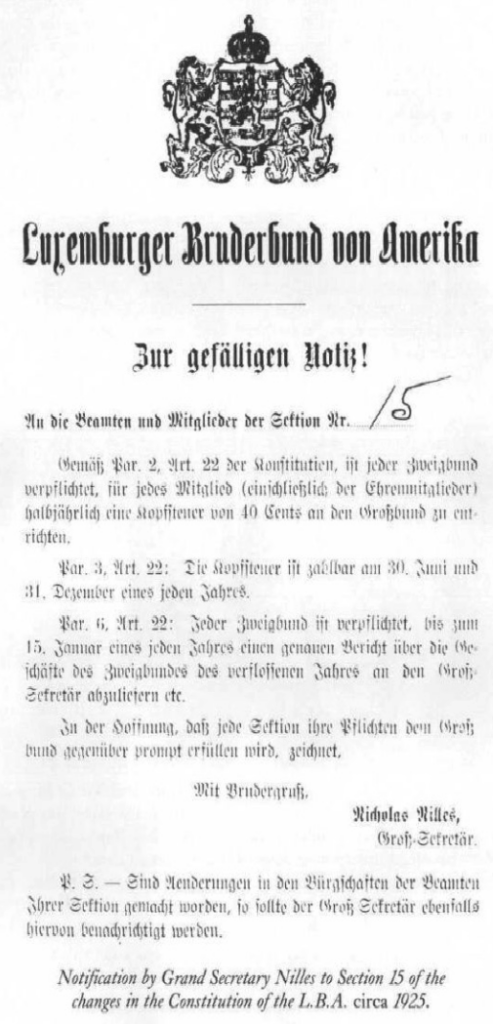
Also in 1963, the Grand Lodge discontinued paying sick benefits to its members. As membership dwindled, the L.B.A. was required to cease issuing insurance coverage to new members and thus came into being the concept of “social” members. Anyone who joins the L.B.A. today is an uninsured social member.
In 1965, an effort was begun to determine if the L.B.A., as an insurance organization, should merge with another, larger organization. At the suggestion of its actuary, the North American Union Society was contacted to determine the suitability of a possible merger. The N.A.U. could offer the L.B.A. a larger death benefit, e.g., $1,000.00 to $1,500.00. If the merger had taken place (which of course, it did not) the Grand Lodge would have been dissolved and the sections would have been known as L.B.A. Council 15, N.A.U. At the convention held on May 2, 1965, the convention endorsed a merger with the N.A.U. pending negotiation of terms and acceptance by the N.A.U. convention to be held in 1966.
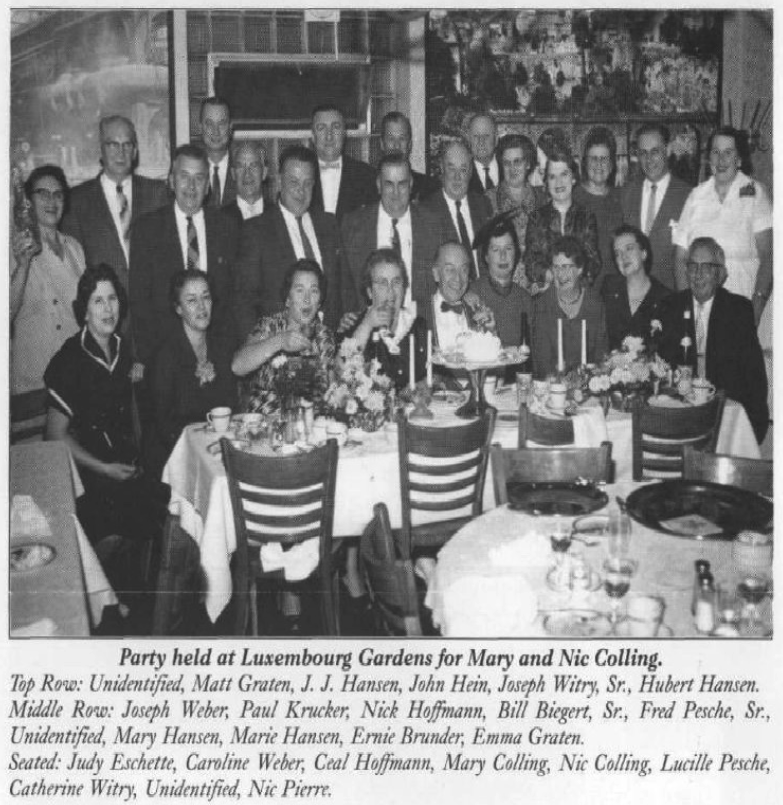
It was also at this convention that Leo Eschette retired as Grand President after sixteen years. Steve Heinz of Section 8 was elected to succeed him, and Steve has held this office to the present day, the longest tenure of any L.B.A. Grand President.
The original purposes for the creation of the LB.A. have long since died. Luxembourg immigration to America has been dormant. Sons and grandsons of Luxembourg immigrants are, at least, one generation removed from Schieren, Bourscheid, Ettlebruck, and Weiler-la-tour, if not more. The American melting pot has been too successful. In addition, the once meaningful insurance benefits are much too low to attract new members.
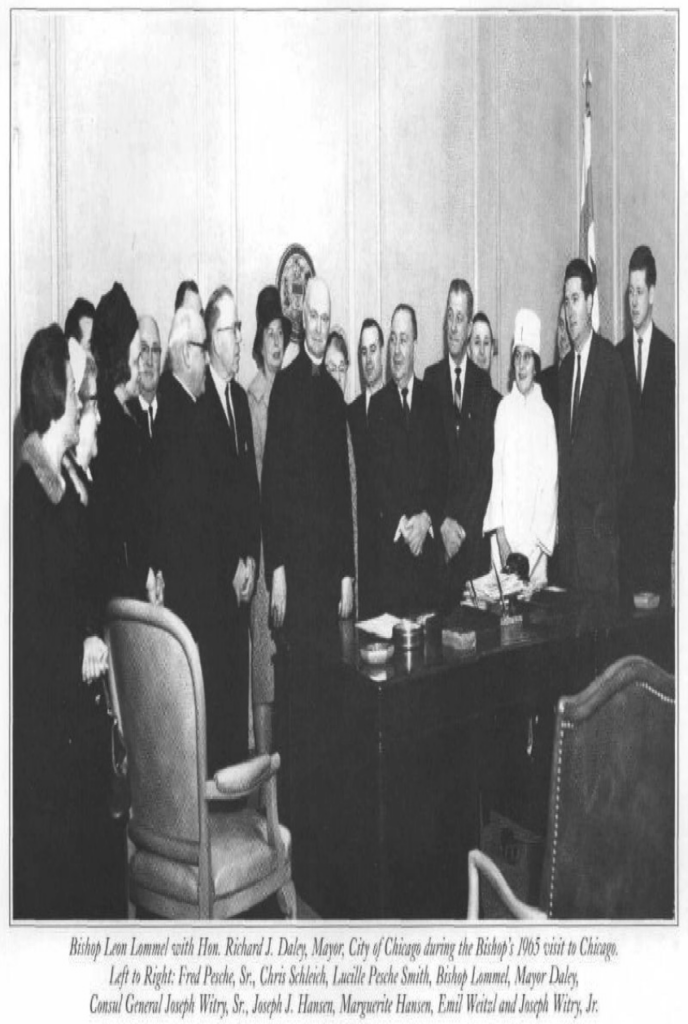
The focus of the L.B.A. has altered. Section 8 has grown in membership since Nick Hoffmann’s grandsons have assumed leadership positions. Section 15 has added two new members and is looking for a new meeting hall at which to reinstitute quarterly meetings. And yet, at the drop of a hat, the L.B.A. and its friends can organize a party and host a reception.
On July 20, 1976, Grand Duke Jean and Grand Duchess Josephine Charlotte arrived in Chicago. They were driven to the Chicago Civic Center where they were given a formal military welcome to Chicago. After leaving the Civic Center they were taken to the Empire Room of the Palmer House for a beautiful luncheon attended by 400 people. In the afternoon, they visited the Museum of Science & Industry and, that evening, they attended a champagne reception at the Northwest Builders Hall hosted by Section 3’s Nicholas Colling. Over 500 people attended this affair which was orchestrated by L.B.A. Grand President, Steve Heinz. Consul General Colling presented the Royal Couple with a bronze low relief portrait of Abraham Lincoln by David Brenner, designer of the Lincoln-head penny. The portrait was one of only one hundred made and was dated 1907.
Mayor Richard Daley issued a proclamation designating Sunday and Monday, July 25 and 26, 1976, as “Luxembourg Days in Chicago”.
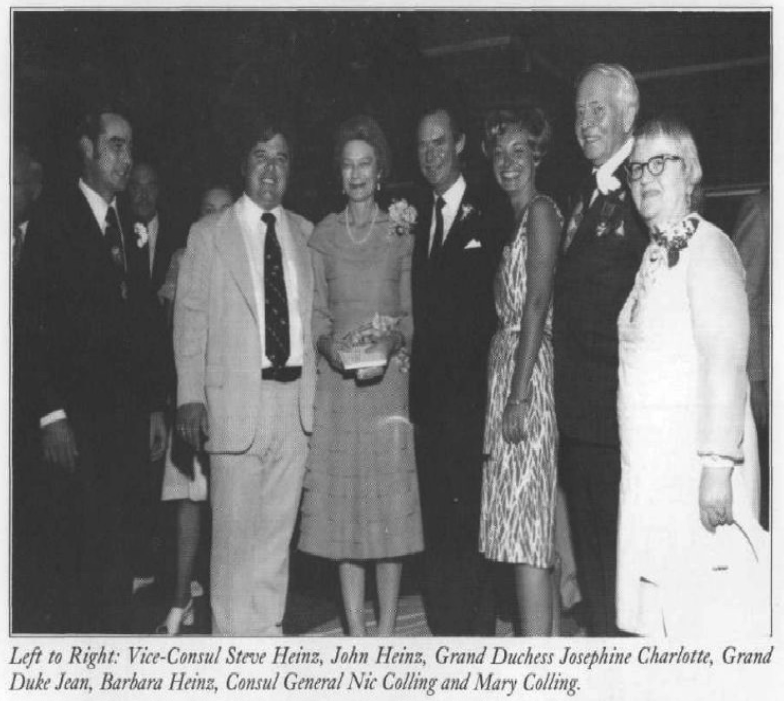
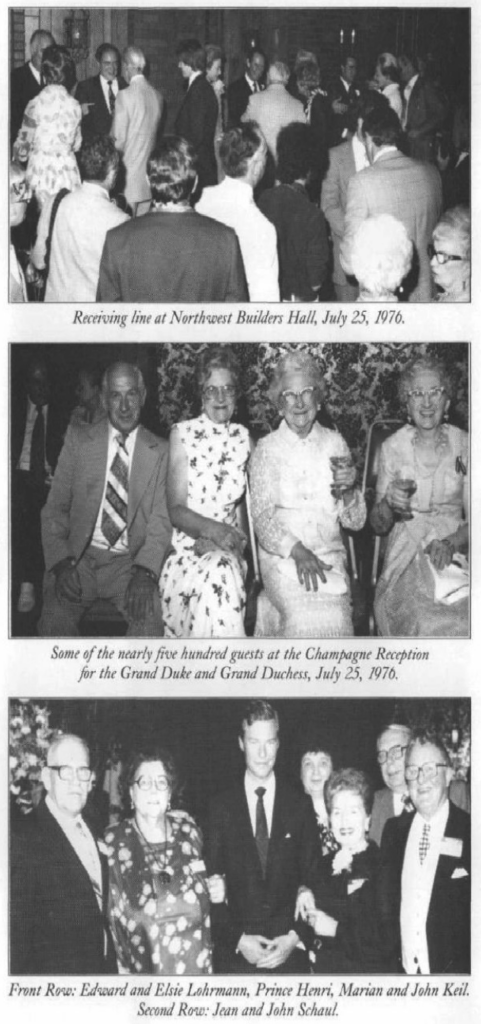
In 1676, the citizenry of Luxembourg chose the Blessed Virgin Mary as their patroness under the title of “Consoler of the Afflicted.
Throughout history, the City of Luxembourg, a natural fortress, was a coveted target of the great military powers surrounding the Grand Duchy. The shrine to Our Lady became a place of refuge and of hope for the Luxembourg people. As wars continued, there was a constant danger that the entire country of Luxembourg would be annihilated and assimilated by one of the great powers of Europe. For three centuries devotions to Mary continued, reaching an annual climax during the “Octave,” the week between the fourth and fifth Sunday after Easter, when people from every village and town make a pilgrimage to Mary’s Shrine in the Cathedral in Luxembourg City.
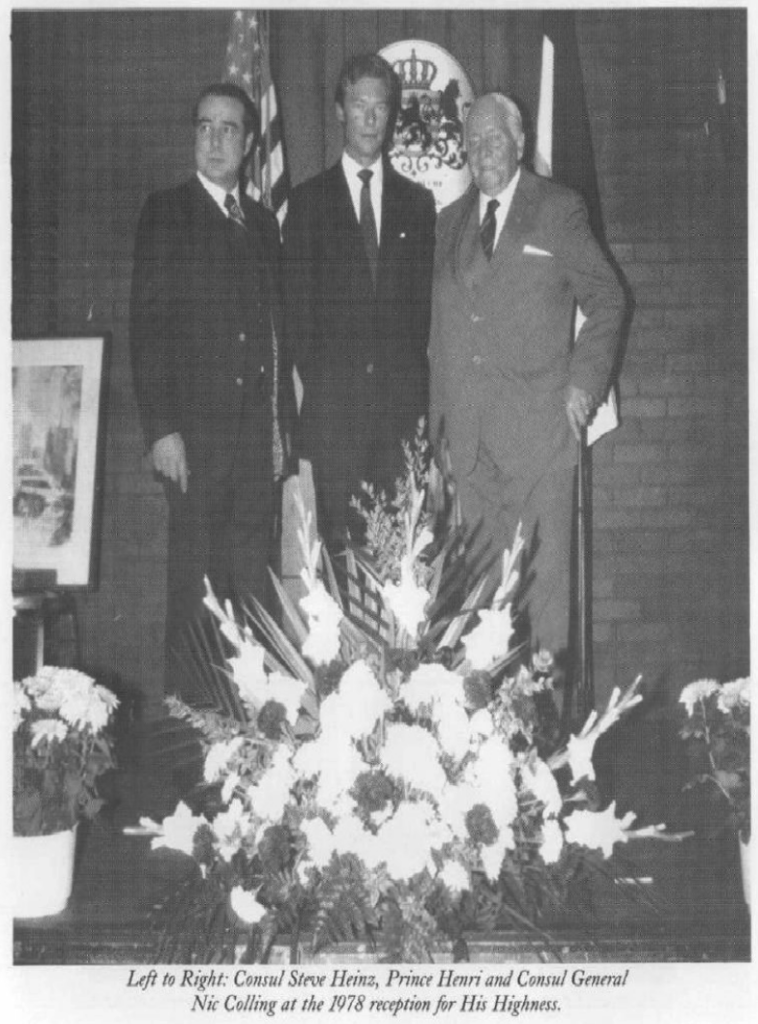
In 1978, Bishop of Luxembourg, Jean Hengen, at the urging of the Rev. Nicholas Wirtz, Rector of the Luxembourg Cathedral, donated to the Luxembourg people of Chicago a statute of “Our Lady, Consoler of the Afflicted.” To preserve the dignity of the gift, it was determined by the leaders of the L.B.A. that the appropriate setting for its veneration would be the Chapel of the Carmelite Monastery, on River Road, in Des Plaines, Illinois.
It was a beautiful fall day as the statue was carried in procession on the afternoon to Sunday, October 29, 1978. Rev. Wirtz came to Chicago for the dedication of the statue.
There were many memories for the Luxembourg people as they gathered in the chapel to give tribute to their “Leif Mamm”. Carrying the statue in procession around the Carmelite grounds were Michael and Joseph Radler, Donald Johanek, and Stephen E. Heinz. All then assembled in the chapel for benediction by Rev. Wirtz and a sermon by the Very Reverend Myles McDonnell, representing Cardinal Cody. Reverend McDonnell stated how fortunate the Luxembourg community was to have obtained such a beautiful statue of Our Lady and such a wonderful place in which to show her our homage and affection.
The Carmelite sisters aided in making the day a memorable one. Under the guidance of Mother Agnes and Mother Catherine, the sisters dressed the statue in beautiful satin robes sent from Luxembourg and made her veil. They prepared the music and arranged the flowers which were once again donated by the Pesche, Platz, and Kellen Families.
The general public is invited to join in group veneration on the third Sunday of every month from 3:00 to 5:00 p.m. Many Luxembourgians attend this religious exercise every month.
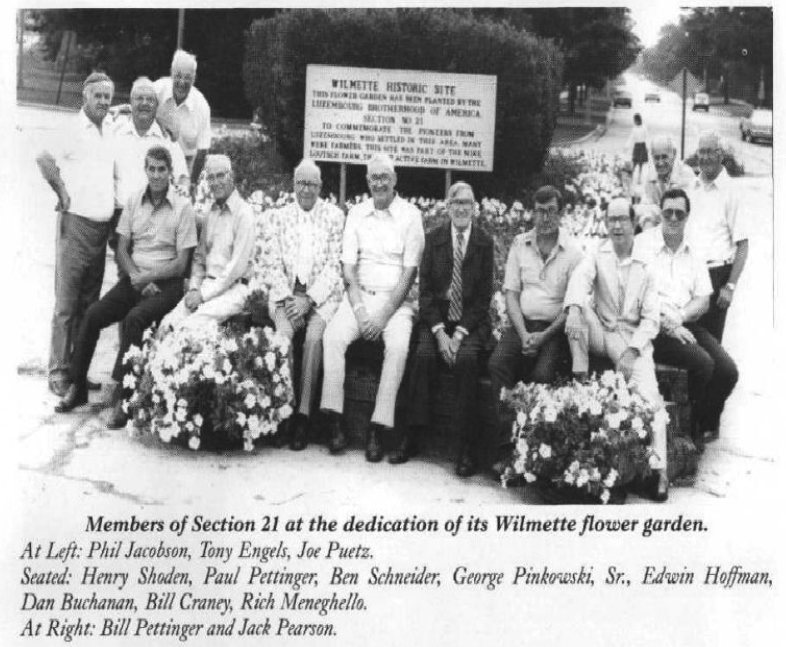
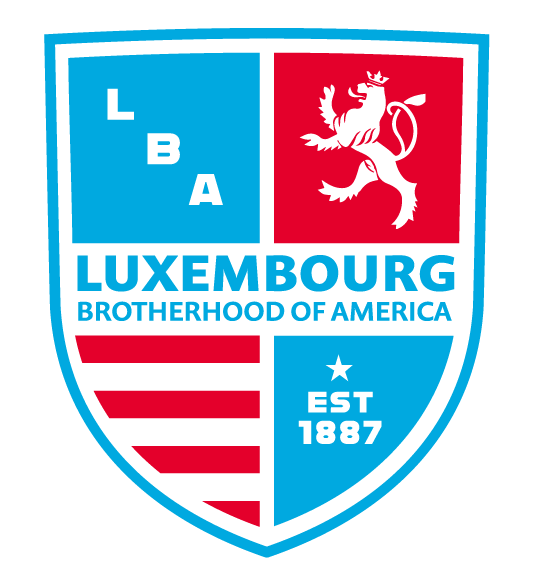
Recent Comments